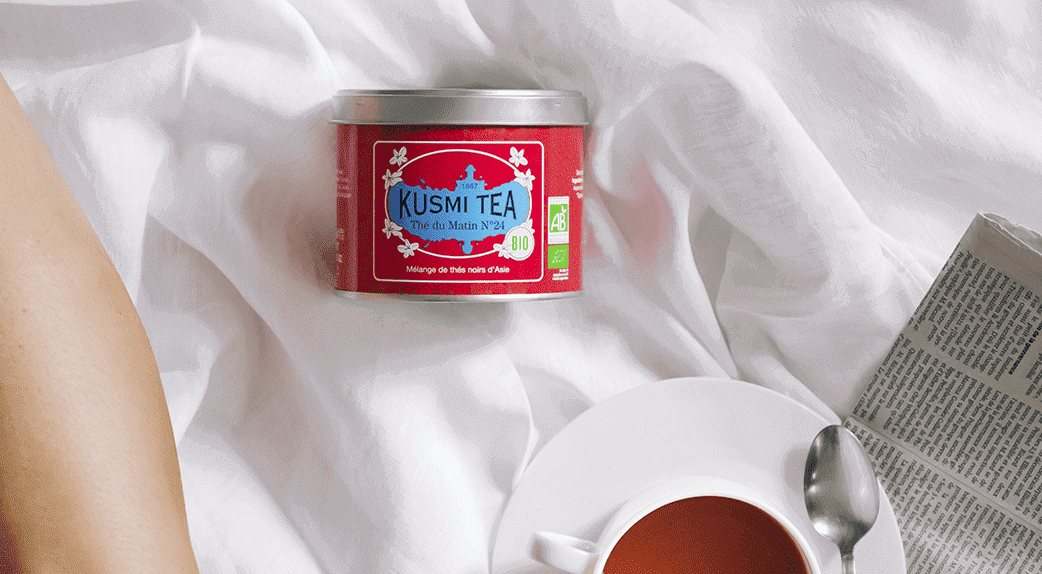Is your heart swinging between green and black tea? Here are some indications to help you decide, for one or the other. And vice versa next time. Even if, as a reminder, green tea and black tea are made of exactly the same thing: dried tea leaves (camellia sinensis). Fermentation, variety, preparation, brewing time and benefits, we tell you more about the differences between green and black tea.
1/ A difference in the manufacturing process
If in both cases, the tea leaves are harvested at the same time and put to dry, it is afterwards that the method differs. Black tea will remain in the open air for a longer period of time, in order to undergo natural oxidation. As with other harvested plants, exposure to oxygen will cause the tissue to blacken. In contrast, green tea is a tea whose oxidation is stopped after plucking. To do this, the leaves are exposed to heat - dry heat in China (fire), wet heat in Japan (steam) - in order to be "seared". The aim is to keep their properties intact by blocking the enzymes responsible for fermentation. It is this difference in the tea-making process that will have several consequences, which we will detail below.
2/ A difference in the colour of the infusion
In short, it is the level of oxidation that determines the "colour" of the tea: white tea undergoes only a very slight natural oxidation, green tea a little more, while black tea undergoes complete oxidation. This affects the tea leaves and the colour of the infusion. Green tea will give a pale yellow to orange infusion, while black tea will give a darker colour, ranging from amber to red to dark brown.
3/ A difference in taste between green and black tea
Although there are many varieties of black and green teas with very different flavours, black tea is generally less bitter than green tea due to its fermentation. However, it has a more intense taste, richer in aromas, and more malty than green tea. The taste of green tea is fresher, more vegetal, and can sometimes remind one of earth or mown grass.
4/ A difference in stimulating effect
Because of its manufacturing process, black tea is more concentrated in theine (or caffeine, as it is the same molecule) than green tea. If you are looking for a convincing effect on your energy level, without reaching the exciting effect of coffee, black tea can give you a little boost. That's why it's particularly popular in the morning at breakfast. This is less true for green tea, which contains half the theine of black tea. Less intense, it is therefore recommended to people sensitive to theine, especially at the end of the day, if you want to be sure to fall asleep easily... But the boosting effect is not the only health benefit of tea, we tell you more just below!
5/ A difference in health benefits
The differences in manufacturing impact the molecular structure of tea. Thus, green tea and black tea do not have the same benefits for health and the body.
Green tea, whose oxidation has been stopped quickly, is one of the teas (along with white tea) containing the most antioxidants. Its high content of polyphenols (also known as catechins) is said to help strengthen the immune system, fight premature cell ageing and water retention while encouraging the elimination of toxins. In fact, these antioxidants are said to be at the origin of the draining and diuretic power of green tea. In addition, the presence of L-theanine is believed to reduce stress, providing a relaxing effect.
Black tea has other health benefits. Its high content of theaflavins is said to help combat diabetes (it regulates blood sugar), cholesterol, headaches and anxiety. Also rich in L-theanine, it acts on anxiety just like green tea.
6/ A difference in preservation
It should be noted that black tea can be kept intact for several years, whereas green tea will lose its freshness after 12 to 18 months (it is obviously still drinkable, but less tasty). It is therefore easy to understand why black tea was for a long time the most consumed tea in Europe, while the tea leaves made the journey from India, Japan or China...
At Kusmi, most of our green and black teas are organic, which means that they come from a sustainable and responsible agriculture. We can only advise you to systematically opt for teas and infusions with a pesticide-free label and whose plants are raised with respect for the environment. Indeed, this label implies the implementation of numerous quality controls during the cultivation and manufacture of tea. In this way, you can be sure that you are drinking a good quality tea and that you are getting the most out of its benefits.
And don't forget that green tea and black tea are not the only two types of tea! Rooibos, matcha, mate, white tea, oolong tea, there is something for everyone. It's up to you to find what you like!
Read more :
Choose a high quality green tea



